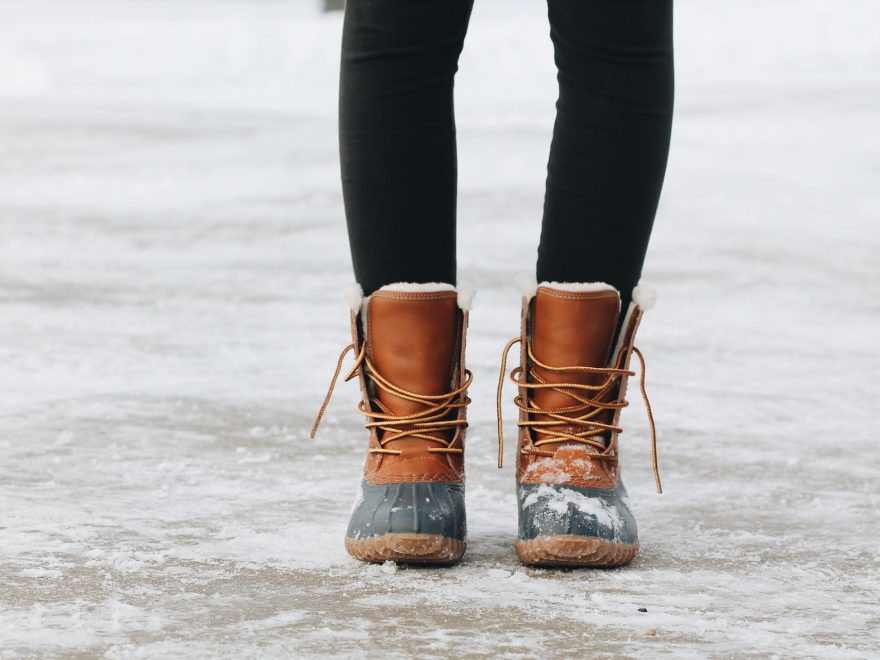As the winter season approaches, outdoor enthusiasts start their hiking adventures. They wonder what type of footwear is best for their adventures in the snow.
Hiking boots and snow boots are both designed to keep your feet warm and dry in cold and snowy conditions. But they have distinct differences that make each better suited for different activities.
In this blog post, we’ll be discussing the differences between hiking boots and snow boots. This includes their materials, insulation, and tread patterns.
We’ll also be answering common questions, such as whether you can wear hiking boots in the snow. If snow boots are waterproof, and whether they’re suitable for hiking?
While both types of boots may look similar, they serve different purposes. Hiking boots are also designed for hiking on trails and uneven terrain. While snow boots are usually made for trudging through snow and slush.
Understanding the differences between these two types of boots can make a difference. Especially, when it comes to keeping your feet warm and dry during winter activities.
So, if you’re planning on hiking in the snow this winter, or need a pair of boots for everyday wear in snowy conditions. Keep reading to learn more about the differences!
Hiking Boots vs Snow Boots: 3 Differences
As a hiking enthusiast, I know that choosing the right footwear is essential. When deciding between hiking boots and walking shoes, there are a few differences.
But what about when it comes to hiking boots vs snow boots? Let’s explore the differences and similarities between these two types of footwear.
Comfort
One of the most important aspects of any footwear is how comfortable it is. When it comes to hiking boots vs snow boots, both types offer varying levels of comfort.
Hiking boots are often designed to provide ample support and cushioning. While snow boots focus on warmth and insulation.
Yet, some hiking boots do come with added insulation for colder weather. It’s important to consider the level of comfort you need based on the terrain and climate of your hike.
Warmth
As mentioned, warmth is a key factor when it comes to snow boots. These boots are also designed to keep your feet warm and dry in cold and wet conditions.
Hiking boots are not always equipped with the same level of insulation. Some hiking boots do come with added insulation or can be also paired with warm socks for colder weather. It’s important to consider the climate and weather conditions of your hike. This helps when choosing between hiking boots and snow boots.
Durability
Both hiking boots and snow boots are usually designed to withstand tough terrain. Snow boots are often made with more heavy-duty materials. These materials can withstand extreme temperatures and deep snow.
Hiking boots are also durable with lighter weight and more breathable materials. These features help for long hikes in various terrains. It’s important to consider the durability you need based on the length and intensity of your hike.
Can I Wear Hiking Boots in the Snow?

Are you an adventurous hiker who loves to hit the trails no matter what the weather conditions are? If you’re planning to go on a winter hike, hiking boots are necessary. These boots keep your feet warm and dry in the snow.
In this section, we’ll explore whether hiking boots are suitable for snowy conditions.
It’s important to understand the difference between hiking boots and snow boots. While hiking boots are usually designed for walking on trails and rough terrain. Snow boots are often made to protect your feet from the cold. They also protect from wet and slippery conditions that come with snow and ice.
Hiking boots may be suitable for light snow. But they are not designed for heavy snow, ice, or freezing temperatures.
Hiking boots are often made with a breathable upper and a sturdy sole. The sturdy sole is great for ventilation and providing stability on the trail. This also means that they are not waterproof. They may not provide enough insulation to keep your feet warm and dry in snowy conditions.
Snow boots are generally made with waterproof materials. These materials provide insulation and a tough sole with excellent traction. The excellent traction keeps you stable on slippery surfaces.
They are usually designed to keep your feet warm and dry in the coldest and wettest conditions. This makes them a better choice for winter hikes.
So, can you wear hiking boots in the snow? The answer is, it depends on the conditions. If you’re planning to hike in light snow or for short distances, your hiking boots may suffice.
In conclusion, hiking boots are great for hiking on trails. They may not be suitable for snowy conditions.
Are Snow Boots Waterproof?
Winter is here and it’s time to bring out the snow boots! As a hiking enthusiast, I understand the importance of having footwear. The hiking footwear keeps your feet warm, dry, and stable on slippery surfaces.
The question that comes to mind is, are snow boots waterproof?
The answer is yes! Snow boots are often designed to keep your feet dry and warm in snowy conditions. They are also made of materials such as Gore-Tex or other waterproof membranes. These materials prevent water from seeping in.
Besides being waterproof, snow boots are also designed to provide non-slippery traction. They feature sturdy soles with deep treads that provide excellent grip and friction. Ensuring that you can walk on snow or ice.
So, if you’re planning a winter hike, make sure you invest in a good pair of snow boots.
Are Snow Boots Good for Hiking?
As a hiking enthusiast, I know the importance of proper footwear when hitting the trails. But when it comes to winter hikes, the question often arises – are snow boots good for hiking?
While snow boots are often designed for cold weather, they may not be the best option for hiking. Snow boots, also known as winter boots, are heavier and less flexible than hiking boots.
This can make it difficult to navigate uneven terrain and steep inclines. Snow boots may not provide the necessary support and traction for hiking. As they are also designed for walking on flat surfaces in snowy conditions.
So, snow boots are great for keeping your feet warm in cold weather. They may not be the best choice for a challenging winter hike. It’s important to choose the right footwear based on the activity and the conditions. Consider investing in a pair of hiking boots designed for cold-weather hikes.
Conclusion
While hiking boots and snow boots may look similar and have different purposes. Hiking boots are also designed for rugged terrain. These boots provide traction and support. While snow boots are often designed to keep your feet warm and dry in snowy conditions.
It is possible to wear hiking boots in the snow, but they may not provide enough warmth or traction for deeper snow.
Snow boots are waterproof. But it’s important to check for extra features such as insulation and traction.
While snow boots may be suitable for light hiking in snowy conditions. They are not designed for the same level of support and protection as hiking boots. It’s important to choose the right footwear for your specific activity and environment.
FAQs
Yes, you can wear hiking boots as snow boots. But they may not provide the same features as hiking boots.
Hiking boots are not the same as winter boots. Winter boots are often designed to keep feet warm and dry in cold and snowy conditions. While hiking boots are generally designed for traction and support on rugged terrain.

Tyler Looney is an avid hiking enthusiast and the author of HikingBootsPros.com, a website dedicated to providing helpful insights and advice on choosing the best hiking boots. His expertise and passion for hiking have made him a valuable resource for both beginner and experienced hikers alike.

